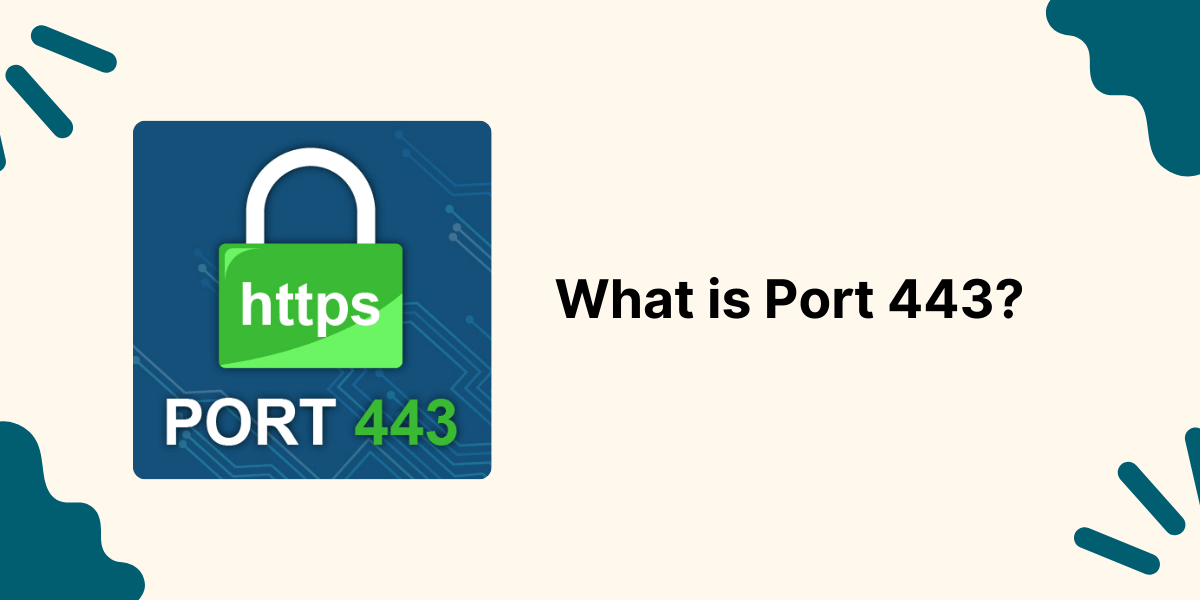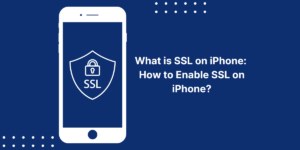Clear SSL State in Chrome, Mac, Android, iPhone and Ipad
When you visit websites that use HTTPS protocol, your Chrome browser establishes an encrypted SSL (secure sockets layer) connection with that server to keep your browsing activity private. The SSL state refers to all the cached information about these SSL certificate keys and session data that Chrome stores to optimize encrypted connections.
Sometimes, issues with a website certificate, problems with cached site data, or Chrome’s SSL handling can prevent successful HTTPS connections. You may see errors like “SSL connection error” or “Your connection is not private.” Trouble loading HTTPS sites or seeing invalid certificate warnings likely indicates your SSL state needs to be cleared in Chrome.
Resetting your browser’s SSL state is one method to resolve HTTPS connectivity problems or clear potentially sensitive SSL session cache records. Clearing this SSL browsing data forces Chrome to forget saved SSL site information and reestablish fresh certificate verifications and encrypted sessions.
This guide will cover ways to clear your SSL state in Chrome on all platforms to troubleshoot HTTPS errors. We will also look at alternative troubleshooting steps like updating Chrome, removing proxy settings, checking website connectivity, and more. Let’s start by understanding common SSL problems and how clearing your SSL state attempts to resolve them.
Key Takeaways
- The SSL state in Chrome refers to the secure sockets layer information that allows for encrypted connections between your browser and websites.
- Clearing your SSL state can fix connection issues with HTTPS websites, resolve certificate errors, or clear potentially cached private data.
- To clear your SSL state in Chrome, open Settings > Advanced > Privacy and Security> Clear SSL state and cookies. You can also turn off Chrome’s prediction service.
- Other fixes include clearing your cache/cookies, updating Chrome, or resetting settings, removing any proxy servers, or using Chrome’s “forget this site” option for specific sites.
- Troubleshooting steps like pinging websites or using Chrome’s logging can help diagnose SSL problems. Reinstalling Chrome is a last resort if no other solutions work.
What Issues Does Clearing SSL State in Chrome Address?
Here are some typical SSL-related errors or issues that can occur in Chrome where clearing your SSL state may help:
HTTPS Site Connection Errors
If secure websites are failing to load and you see error messages like “This site can’t provide a secure connection” or “Your connection is not private,” this indicates a problem with establishing an SSL-encrypted session with the website.
Resetting your SSL state forces Chrome to re-verify the Certificate and recreate the HTTPS connection rather than using a faulty cached connection.
Certificate Errors
Malformed certificate warnings like “NET::ERR_CERT_COMMON_NAME_INVALID” or “NET::ERR_CERT_DATE_INVALID” means Chrome encountered an issue validating the site’s SSL certificate that may be cached.
Clearing your SSL state forces a fresh certificate check, which may resolve transient certificate errors.
Private Data Clearing
Chrome caches SSL session IDs and other secure browsing activities that could include login info or cookies. Resetting this can help clear potentially sensitive private data.
Chrome Prediction Services
Chrome pre-connects to sites it predicts you will visit next. Clearing the SSL state and turning off this feature forces fresh SSL handshakes.
General HTTPS Troubleshooting
Suppose you are seeing general issues connecting to HTTPS sites in Chrome. Clearing your SSL state is one troubleshooting step that forces Chrome to reestablish encrypted sessions instead of relying on cached certificate verifications.
Now that we understand common problems clearing SSL state attempts to fix let’s look at the different ways to clear SSL data in Chrome, depending on your operating system.
How to Clear SSL State in Chrome on Windows
Follow these steps to clear the SSL state in Chrome on a Windows PC:
- Open the Chrome browser and click the three vertical dots in the top right to open Settings.
- Click Privacy and Security in the left menu.
- Scroll down and click the Clear SSL state button.
- In the pop-up that appears, click Clear to confirm.
This resets all cached SSL session data in Chrome. Any sites you previously visited using HTTPS will need to reestablish SSL connections and repeat certificate verifications instead of relying on your saved SSL state.
After clearing your SSL state, try loading any HTTPS websites you were having issues with to see if this resolved the problems.
You can also turn off Chrome’s next site prediction feature on this Privacy and security settings page. Turn Use prediction service to load pages more quickly to the Off position to prevent Chrome from pre-caching SSL connections.
How to Clear SSL State in Chrome on Mac
Follow these steps to clear your SSL state on a Mac:
- Click the Chrome menu in the top left corner of your screen and select Preferences.
- Click the Privacy and Security option.
- Scroll down and click the Clear SSL state button.
- Confirm clearing your SSL state in the pop-up message.
- Restart Chrome so the changes take effect.
Much like Windows, this will reset all SSL session data, so Chrome re-establishes fresh, secure connections on subsequent site visits.
On this screen, you can also turn the Use prediction service to load pages more quickly and set it to Off. After making these changes, quit and relaunch Chrome.
How to Clear SSL State on Chrome on Android
If you are using Chrome for Android, here is how to clear your SSL state:
- Open the Chrome app and tap the three-dot menu icon.
- Tap Settings in the menu.
- Tap Privacy in the Settings menu.
- Tap Clear SSL preferences.
- Confirm clearing SSL data in the pop-up message.
- Restart the Chrome app.
Similar to other platforms, this will purge and reset all cached SSL data for any sites you visited over HTTPS. After restarting Chrome, you can test if this resolves any SSL connection issues.
How to Clear SSL State on Chrome on iPhone or iPad
Follow these steps to clear SSL state on iOS:
- Open the Chrome app and tap the three dots in the bottom right to open Settings.
- Tap Privacy in the menu.
- Tap Clear browsing data.
- Select the Cookies, site data, and cached images and files option only.
- Tap Clear browsing data at the bottom.
- Restart Chrome for the changes to apply.
Because iOS Chrome does not have a dedicated “Clear SSL state” function, clearing cached data is an alternate method for resetting SSL connections.
Alternative Troubleshooting Steps
In addition to clearing your SSL state in Chrome, some other troubleshooting steps for HTTPS errors include:
- Clear Cache and Cookies: Chrome’s cached site data can sometimes cause SSL issues. Try clearing your full browser cache and cookies and restarting Chrome.
- Update Chrome: Make sure you are running the latest Chrome version in case an SSL bug fix or certificate update is required.
- Reset Chrome Settings: Revert any custom Chrome configurations by resetting your browser settings.
- Check Connectivity: Try troubleshooting your network and pinging affected sites to isolate connectivity issues versus problems with Chrome’s SSL handling.
- Remove Proxy Settings: If you have any proxy servers configured, remove them under Chrome’s network settings, as proxies can interfere with direct SSL connections.
- Reinstall Chrome: If no other solution resolves your SSL issues, a complete uninstall and reinstall of Chrome will reset all SSL and certificate data as a last resort.
Using Chrome’s SSL Logging and Troubleshooting Tools
Chrome also provides some advanced SSL and certificate troubleshooting tools under the Developer Tools menu that technical users can leverage:
- The Security tab will display full details about the SSL certificate for a site you are connected to, highlighting any potential issues flagged.
- The Network tab logs all network requests, and you can inspect the details of each HTTPS connection made.
- The Console tab will output verbose SSL error messages that may contain troubleshooting clues.
- The site information icon to the left of the address bar provides certificate details about the current site you are viewing.
- You can also click the Not secure warning in the address bar and use the Certificate error option to troubleshoot information.
These built-in Chrome developer tools provide technical users with more information about SSL connection failures that may aid in troubleshooting.
Clearing SSL State for Specific Sites Using “Forget This Site”
Instead of clearing your full SSL state in Chrome, you can also use the “Forget this site” function when clicking the “Not secure” warning on a specific site.
This will clear any cached SSL session data only for that particular website, so Chrome rebuilds a fresh SSL connection on the next visit.
The “Forget this site” option is available by clicking the invalid certificate warning and can be helpful in isolating and troubleshooting SSL problems on individual sites.
Conclusion
Clearing your SSL state in Chrome is an easy troubleshooting step that can resolve many common HTTPS connection problems. By resetting the encrypted session data, certificate validations, and other SSL artifacts cached by Chrome, you force your browser to rebuild fresh SSL handshakes when visiting secure sites. This can fix errors caused by faulty cached certificate data. Along with complementary steps like updating Chrome, inspecting SSL details, and tweaking browser settings, flushing your SSL state is a valuable way to troubleshoot invalid certificate warnings, connection issues on HTTPS sites, and other SSL-related problems you may encounter in Chrome.
FAQs About Sign the PowerShell Script Code with YubiKey
Should I clear my SSL state regularly?
You do not need to clear your SSL state in Chrome routinely. Resetting SSL data fixes specific connection issues or clears sensitive browsing artifacts. With prediction services disabled, Chrome revalidates certificates as needed. You only need to clear the SSL state to troubleshoot problems loading HTTPS sites.
What happens when you clear the SSL state in Chrome?
Clearing SSL state resets all cached SSL session data in Chrome. It forces sites to reestablish encrypted HTTPS connections and re-verify certificates rather than using potentially faulty saved SSL data.
How do I fix the SEC_ERROR_UNKNOWN_ISSUER error in Chrome?
The SEC_ERROR_UNKNOWN_ISSUER error usually means the certificate issuer is not trusted. Try clearing your SSL state so Chrome can revalidate revalidates the Certificate. Checking your system date/time is correct can also fix this.
Why is Chrome saying the connection is not secure?
The “connection not secure” warning typically means Chrome failed to create an encrypted SSL connection with the site, often due to invalid certificate errors. Clearing your SSL state can help resolve transient certificate problems.
How do I allow insecure connections in Chrome?
You can allow insecure connections in Chrome by going to advanced settings and turning “Allow invalid certificates for resources loaded from localhost” on. This lets you load sites with self-signed certificates but is not recommended for security reasons.
How do I view SSL certificate details in Chrome?
In Chrome, click the lock icon and go to Certificate > Details to view in-depth SSL certificate information, such as validity dates, issuer, encryption algorithm, etc. Chrome’s Developer Tools window also shows SSL details.
What causes net::ERR_CERT_AUTHORITY_INVALID error in Chrome?
The net::ERR_CERT_AUTHORITY_INVALID error means the SSL certificate issuer chain is not valid. This is often caused by the system clock needing to be more accurate. Checking Chrome certificate settings and clearing your SSL state may also help resolve this issue.
Why do I keep getting SSL_ERROR_RX_RECORD_TOO_LONG in Chrome?
SSL_ERROR_RX_RECORD_TOO_LONG error indicates an issue with the maximum size of SSL response data supported by the server. It may occur on specific sites if you have cleared your SSL state in Chrome. Restarting Chrome can typically resolve this error.

Priya Mervana
 Verified Web Security Experts
Verified Web Security Experts
Priya Mervana is working at SSLInsights.com as a web security expert with over 10 years of experience writing about encryption, SSL certificates, and online privacy. She aims to make complex security topics easily understandable for everyday internet users.



